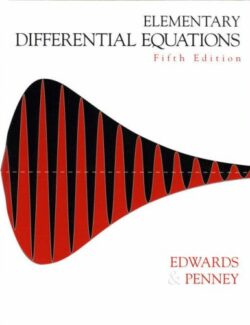Description
We wrote this book to provide a concrete and readable text for the traditional course in elementary differential equations that science, engineering, and mathematics students take following calculus. Our treatment is shaped throughout by the goal of a flexible exposition that students will find accessible, attractive, and interesting.
The applications of differential equations have played a singular role in the historical development of the subject, and whole areas of study exist mainly because of their applications. We therefore want our students to learn first to solve those differential equations that enjoy the most frequent and interesting applications. Hence we make consistent use of appealing applications to motivate and illustrate the standard elementary techniques of solution of differential equations.
The first course in differential equations should also be a window on the world of mathematics. While it is neither feasible nor desirable to include proofs of the fundamental existence and uniqueness theorems along the way in an elementary course, students need to see precise and clear-cut statements of these theorems, and to understand their role in the subject. We include appropriate existence and uniqueness proofs in the Appendix, and occasionally refer to them in the main body of the text.
The list of introductory topics in differential equations is quite standard, and a glance at our chapter titles will reveal no major surprises, though in the fine structure we have attempted to add a bit of zest here and there. In most chapters the principal ideas of the topic are introduced in the first few sections of the chapter, and the remaining sections are devoted to extensions and applications. Hence the instructor has a wide range of choice regarding breadth and depth of coverage.
At various points our approach reflects the widespread use of computer programs for the numerical solution of differential equations. Nevertheless, we continue to believe that the traditional elementary analytical methods of solution are important for students to learn. One reason is that effective and reliable use of numerical methods often requires preliminary analysis using standard elementary techniques; the construction of a realistic numerical model often is based on the study of a simpler analytical model.













Leave us a comment
No Comments